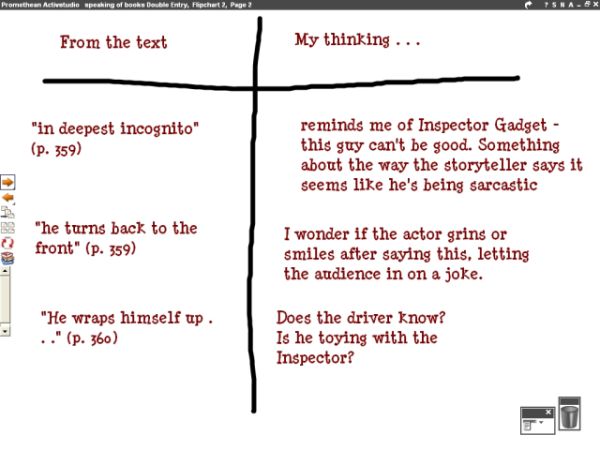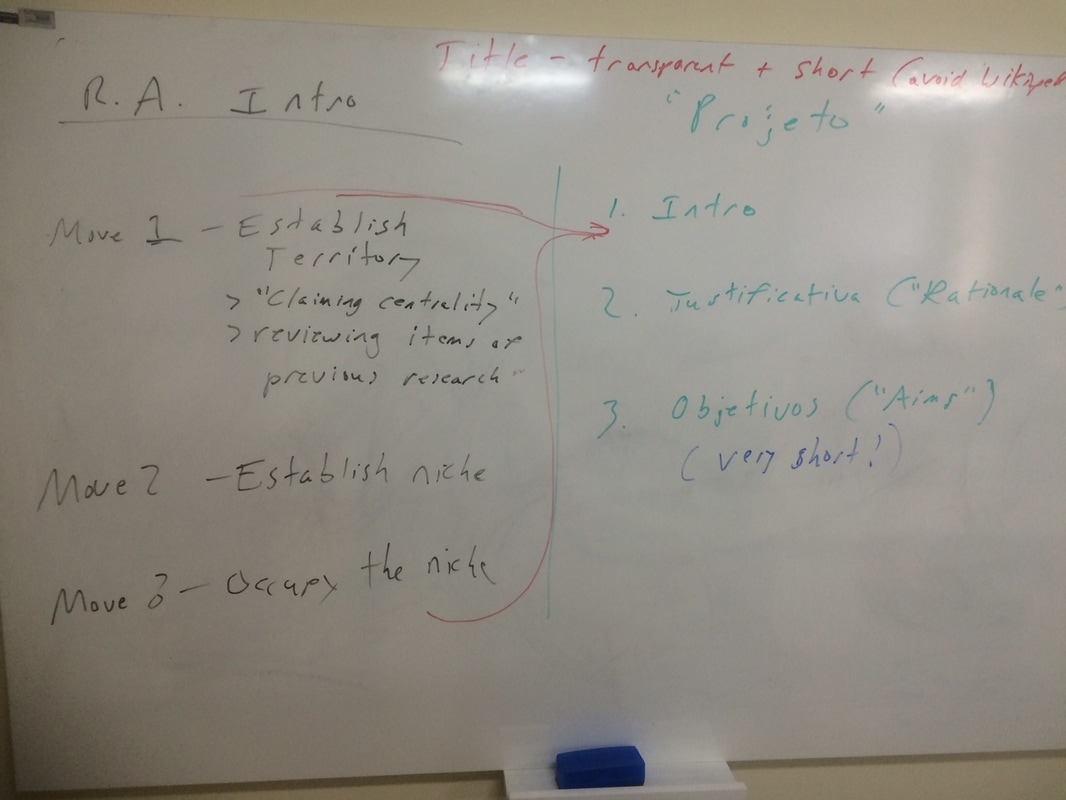LINGUA INGLESA ESCRITA IV (HE285)
Professor: Dr. Ron Martinez
Office: 1014 (Reitoria)
CLASS DOCUMENTS
Student Blogs
•http://bestnameleft.weebly.com/
•http://thisiswritingbyrebeca.weebly.com/
•http://onedoesnotsimplypasswritingiv.weebly.com/
•http://danieleferrarini.weebly.com/
•http://sanhaia.weebly.com/
•http://mcarolinaalmeida.weebly.com/
•http://luasoul.weebly.com/
http://fernanda06mr.weebly.com/
http://mystruggleiv.weebly.com/blog
http://biancaclaudino.weebly.com/blog
VIDEO TUTORIAL:How to do a "lexical profile" (find word frequency
information) for your essays:
information) for your essays:
LIBRARY
Link to "Portal de Periódicos" CAPES
Instructions for "conexão doméstica" (to access research portals)
Instructions for accessing journals through CAFe
"Treinamento no uso do Portal de Periódicos"
READINGS
Casanave, C. P. (2008). ‘‘The stigmatizing effect of Goffman’s stigma label: a response to John Flowerdew’’. Journal of English for Academic Purposes, 7, 264-267.
Flowerdew, J. (2008) Scholarly writers who use English as an Additional Language: What can Goffman’s ‘‘Stigma’’ tell us? Journal of English for Academic Purposes, 7, 77-86.
Flowerdew, J. (2009) Goffman’s stigma and EAL writers: The author responds to Casanave. Journal of English for Academic Purposes, 8, 69-72.
Hanauer, D.I., & Englander, K. (2011). Quantifying the burden of writing research articles in a second language: Data From Mexican scientists. Written Communication, 28(4), 403-416.
Miller, T., & Parker, D. (2012). Writing for the reader: a problem-solution approach. English Teaching Forum, 3, 21-27.
Swales, J., & Najjar, H. (1987). The writing of research article introductions. Written Communication, 4(2), 175-191.
Thompson, G. (2001). Interaction in academic writing: Learning to argue with the reader. Applied Linguistics, 22(1), 58-78.
Widdowson, H. (2000). On the limitations of linguistics applied. Applied Linguistics, 21(1), 3-25.
Wingate, U. (2012). 'Argument!' helping students understand what essay writing is about. Journal of English for Academic Purposes, 11, 145-154.
ACADEMIC VOCABULARY LISTS
The Phrasal Expressions List (Martinez & Schmitt, 2012)
The Academic Collocations List (Ackermann & Chen, 2013)
The New Academic Vocabulary List (Gardner & Davies, 2013)
The Academic Formulas List (Ellis & Simpson-Vlach, 2010)
LINKS
APA Formatting (Purdue University)
ABNT Formatting
Meaning and use of Latin abbreviations
Vocabulary Frequency Profiler (LexTutor)
Sketch Engine for Language Learning
Write and Improve (automated writing feedback)
Free Paper Grader ("PaperRater.com")
"OneLook" Dictionary
"OneLook" Thesaurus
CLASS CALENDAR
WEEK 1
HOMEWORKRead the article "Flipping the Feedback" here and write notes on the following questions. (Bring notes to class.)
Your browser does not support viewing this document. Click here to download the document.
TAKE THE CLASS SURVEY!QUIZ: WHAT ARE YOUR BELIEFS ABOUT ACADEMIC WRITING?If survey (above) does not appear automatically, please click here."SUBTEXT" -- THE STORY OF AN EMAIL
|
2. HOMEWORK FOR MONDAY, APRIL 3RDRead the WINGATE (2012) article (under "Readings" at the top of this webpage, and answer the following questions:
|
EXAMPLE OF HOW TO USE "SKELL"
DOUBLE-ENTRY JOURNAL SAMPLE
HOMEWORK
Your browser does not support viewing this document. Click here to download the document.
WEEK 4
CLASS VOCABULARY LIST
hence
in order to
widely
pinpoint
hedge
slant
bias
overt
novice
skillfully
stance
entail
warrant
amid
detrimental
OOPS (mistakes to avoid)
"researches" (research is not usually countable)
"related with" (related to)
"incorporate to" (incorporate into)
"the problem about" (the problem with)
"the effect of ___ in ____" (the effect of ___ on ___)
"related with" (related to)
"incorporate to" (incorporate into)
"the problem about" (the problem with)
"the effect of ___ in ____" (the effect of ___ on ___)
1. FOCUS ON TITLES AND FIRST SENTENCES
Access the Google doc here and share your titles and sentences with the class.
2. "COMMUNICATING TO ENGAGE"
Read the article and discuss it in relation to your own reading conducted for this class.
Example from Psychology Today
Example from Scientific American
Example from Psychology Today
Example from Scientific American
3. STUDENT SAMPLES FROM LAST YEAR
4. STUDENT EXAMPLES FROM THIS YEAR
5. ADD A QUOTE
Find an image with a quote about happiness and money that you like, and paste it here.
WEEK 5-6
COMMENT ON YOUR CLASSMATES' BLOGS
Read some of your classmates' texts and comment on at least one.
EXAMPLES OF 'FIVE THINGS' ARTICLES
"5 Things You Didn't Know about Edgar Allan Poe"
"10 Things You Didn't Know about Ulysses"
"5 Things You Need to Know about Sign Language"
"5 Things You Didn't Know about Etymology"
"10 Things You Didn't Know about Ulysses"
"5 Things You Need to Know about Sign Language"
"5 Things You Didn't Know about Etymology"
WEEK 7
EXAMPLES: FROM "5 THINGS" TO ESSAY
- "10 things you didn't know about Van Gogh"
- "Van Gogh's Fading Colors" (approx. 1,200 words)
- "10 things you didn't know about Shakespeare"
- "How Shakespeare spelled his name" (approx. 700 words)
WEEK 9 (May 15)
EX. 1 - WHAT'S THE HYPOTHESIS?
Read the abstract for this article and then discuss what the hypothesis was of the researchers.
EX. 2 - ANALYSIS OF ESSAY INTRODUCTIONS
Read the three essay introductions and identify where the authors establish territory, establish niche, and occupy niche. DOWNLOAD HERE
EX. 3 - WHERE IS THE "NICHE"?
There are two "however"s in the Introduction below. Which one represents the beginning of the author's establishment of niche? Or are there two niches?
EX. 4 - HOW DO AUTHORS "ESTABLISH TERRITORY?"
- Visit the Journal for English for Academic Purposes (at ScienceDirect).
- Browse the journals, looking for articles that interest you.
- Skim over the introductions of at least 5 articles, and note the way the author(s) "establish territory."
- Focus especially on the first 2 sentences of the Introduction section (NB: not the Abstract). (Notice how their function is often to "claim centrality" -- although other functions, such as "defining" are also common.)
- Make a "collection" of phrases/sentences you think are worth recording. Be sure to underline/highlight the part you think is useful.
- Be sure to note not only the phrase/sentence, but also the link to the source article.
- When done, copy and paste onto the Google doc.
EX. 5 - TO CITE OR NOT TO CITE?
Without looking at the original article (!!!), download the introduction and find the the missing in-text citations. (There are 6 of them.) DOWNLOAD HERE
PART 2
HOMEWORK: FINISH THE 'FAKE CITATION' EXERCISE
Access the Google Doc here.
FINAL PROJECT DESCRIPTION
- You will write a master's project proposal for the Post-Graduate Program in "Letras" at UFPR. However, you will only need to complete the first 3 sections: Introduction, Rationale ("Justificativa"), and Aims ("Objetivos").
- Your project should consist of a title page, followed by a contents page, and between 3-6 pages that comprise Introduction, Rationale, and Aims.
- Your first draft will be due on June 15th, and your final draft on June 27th.
SAMPLE PROJECT
An example of a master's project is provided for you here.
WEEK 12
WRITING FOR THE READER IN THE TEXT
FIND THE "READER IN THE TEXT": Download Flowerdew (2008) and try to find at least 2 examples. Copy and paste them onto a Word document.
HOMEWORK FOR 20/05: 1) Read pp. 86-90 in "They Say, I Say". 2) Choose one topic and Respond to the "reader-in-the-text" - Download worksheet here.
HEDGING: EPISTEMIC MODALITY |
|
Access here the Google Doc we worked on in class, and use for future reference in your writing.
BOARD WORK (WEEK 13) |
WEEK 14 (2017) - The Home Stretch
CAN YOU SPOT PLAGIARISM? TAKE THE TEST!
WEEK 15
Some final touches
In case the embedded form does not load, you can also access the test here.
WRITE A SHORT PARAGRAPH THAT IS BASED ON THE UNDERLINED PART OF THE TEXT BELOW, TAKEN FROM MARTINEZ AND MURPHY (2011, p. 270).
|
|
This student's essay received a good score, but there is a section in the essay that I felt should be deleted. Why? Download the sample here.
2. SCREENCAST-O-MATIC DEMO
Access the demonstration here.
3. DEALING WITH COLOR CODES
Download the worksheet here and work with a partner to identify why the codes have been used, and what needs to be changed (and how).
4. ENHANCING YOUR VOICE
Remember the importance of lexical diversity and cohesion. Download the worksheet here.




